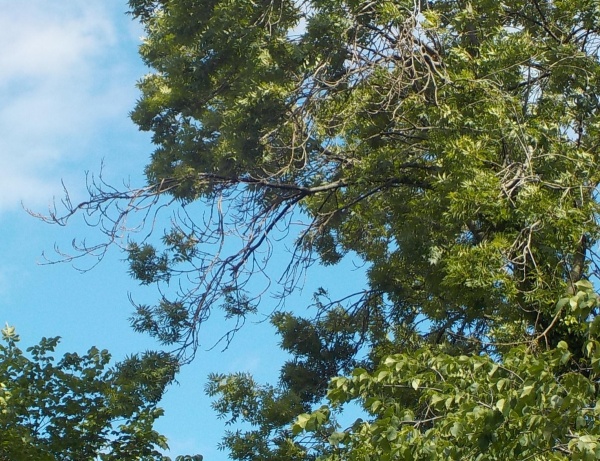Ash Dieback
 Ash dieback, a fungus which affects ash trees, is beginning to weaken and kill trees in the Dean village and Dean valley. It is caused by a fungus, Hymenoscyphus fraxineus also known as Chalara ,which blocks the water transport systems in trees causing leaf loss, lesions in the wood and on the bark and ultimately the dieback of the crown of the tree.
Ash dieback, a fungus which affects ash trees, is beginning to weaken and kill trees in the Dean village and Dean valley. It is caused by a fungus, Hymenoscyphus fraxineus also known as Chalara ,which blocks the water transport systems in trees causing leaf loss, lesions in the wood and on the bark and ultimately the dieback of the crown of the tree.
This disease, first described in Poland in 1992, was first identified in Britain in 2012 in nursery stock and then in the wider environment in 2013 although it could possibly have been around in the country much longer undetected.
The disease is spread by spores from the fruiting bodies of the fungus produced on fallen ash leaves. These airborne spores can disperse naturally via wind over tens of miles.
Ash die-back affects saplings and immature trees more quickly and dramatically than mature trees and most of the younger trees in the village show signs of the disease.
However 2 very large ash trees were removed last year in the Moray Bank gardens, which adjoin the Dean Valley walkway, not with the ash die-back disease, but because they were unsound.
The solution is to monitor trees, remove dead branches and dying trees, clean up the leaves lying on the ground which harbour the spores and replant with another important hardwood our native oak tree Quercus robur.
Though the mighty oak tree has been absent from the Dean Valley for more than 2 centuries it is the climax woodland tree of middle Scotland and is rich in biodiversity hosting a very large number of variety of species. Its absence in the City has been entirely due to oaks being very sensitive to smoke pollution created by coal fires from the late 18 th century onwards. Ash, elm and to a lesser extent sycamore were not so badly affected by pollution and the reason so many non-native lime trees have been planted and survived in the City is that they have an in-built immunity to pollution.
So on a positive note we have the opportunity now to re-plant oaks where the ash and elms have to be removed and re-establish our natural Scottish native hardwood woodland along our beautiful picturesque valley.
KT 03/07/2019
